Cooling technology used in Qatar’s world cup stadiums powered by QF research
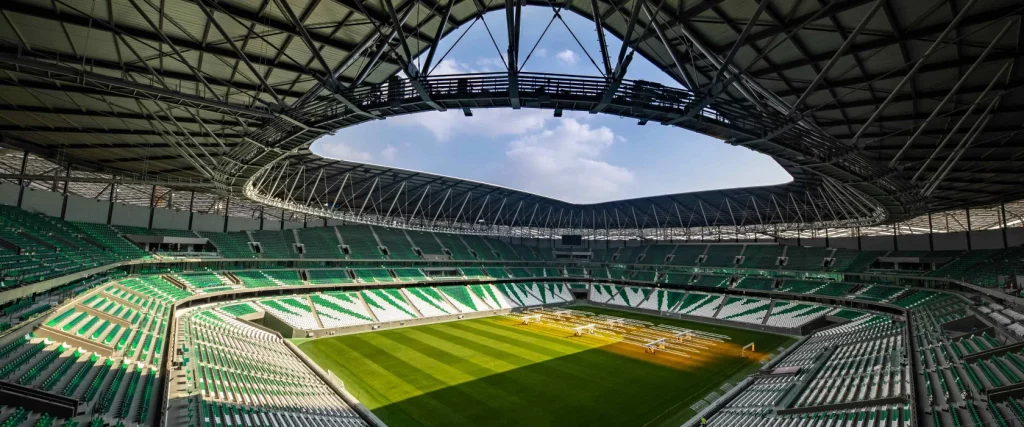
Dr. Saud Ghani, the mastermind behind the novel outdoor cooling technology, details its development process and the support he received from QF’s funding entity
While it isn’t possible to control the macro climate in Qatar as a whole, it is certainly possible to control it in defined areas within the country. The findings of a project funded by Qatar Foundation’s Qatar National Research Fund have demonstrated this – and set down a blueprint for the cooling technology being used in FIFA World Cup Qatar 2022™ stadiums.
“The best stadiums keep everyone comfortable, irrespective of the external weather conditions,” said Dr. Saud Ghani, Professor of Mechanical Engineering at Qatar University.
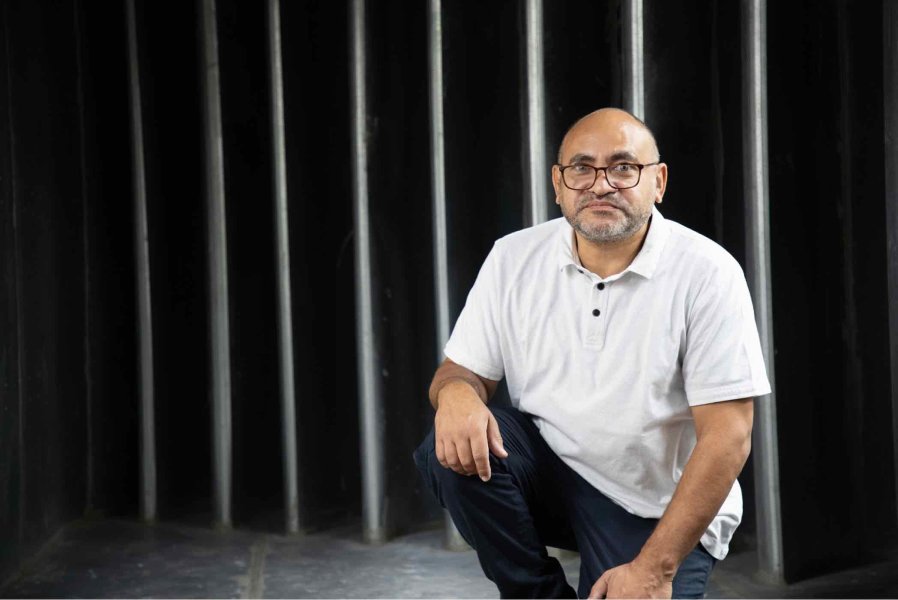
Dr. Saud Ghani.
“This is done through design that is based on ensuring a positive relationship between the venue design and the climate. We don’t want the venue to work against the climate but to be smart and work with it.”
Nicknamed ‘Dr. Cool’ by his peers, Dr. Ghani led the Qatar National Research Fund (QNRF) research project that resulted in the development of the cooling technologies for the FIFA World Cup Qatar 2022™ stadiums. He started working in the area of air-conditioning engineering during his PhD in the UK where he worked on designing the air conditioning for the Ford Mondeo.
“There is no doubt that designing air conditioning for an open-air stadium was a big challenge for everyone – the designers, the engineers, the architects and the contractors,” he explained. “The biggest design houses in the world had never designed an air-conditioned stadium before, so really, it was left to us. It was our challenge and we needed to solve it. And with sustainability, modularity and functionality in mind, we did it.
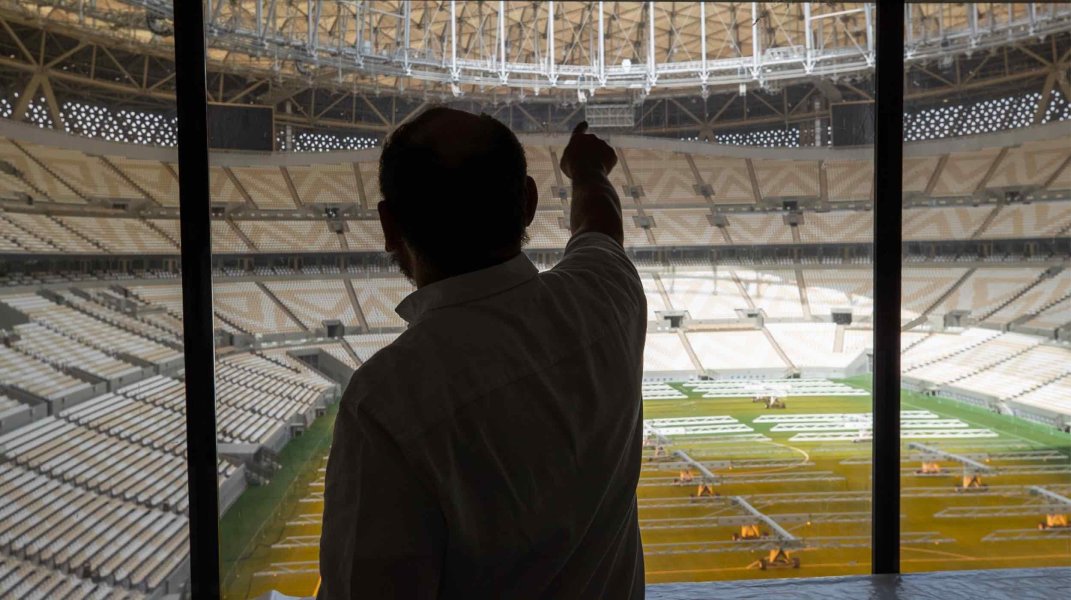
Dr. Ghani’s plan was to create and maintain a microclimate bubble within the stadium, a task that inherently becomes harder in open-air stadiums. He explained: “The biggest challenge in cooling an open-air stadium is stopping outside warm air from entering it – the defining of the interaction boundary between the inside micro bubble and the outside macro climate.
“This meant that a detailed aerodynamic analysis needed to be done on the stadium form and footprint to better understand how to use its design to minimize the infiltration of the warm air into the stadium.”
His team began the work by 3D-printing scale models of the proposed stadiums for the World Cup. Once printed, the 3D-printed stadium models were placed in a wind tunnel for aerodynamic testing to see how their form and size was interacting with the external wind and how it could be improved.
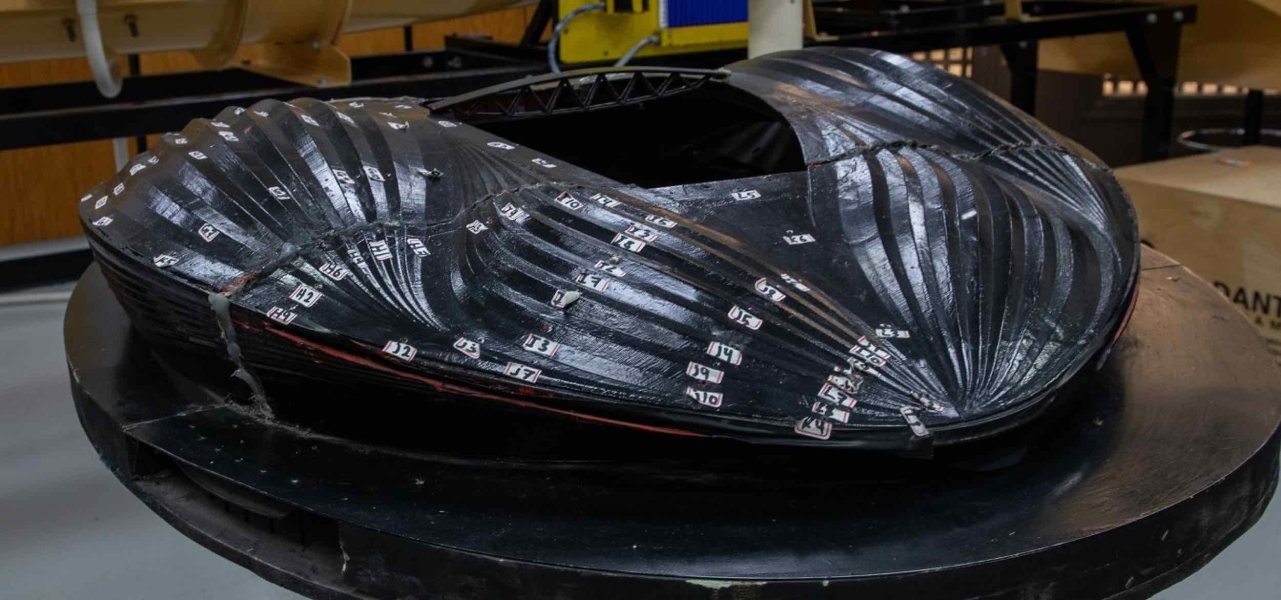
3D printed model of Al-Janoub stadium.
“After the 3D printed model was placed in the wind tunnel, smoke – representing wind – was pushed out at different pressures to test how the design reacted to wind at different speeds and various incoming directions,” said Dr. Ghani. “Then we used laser sheets and cameras to analyze the flow of air over the design, including the manner in which air enters and exits the stadium.”
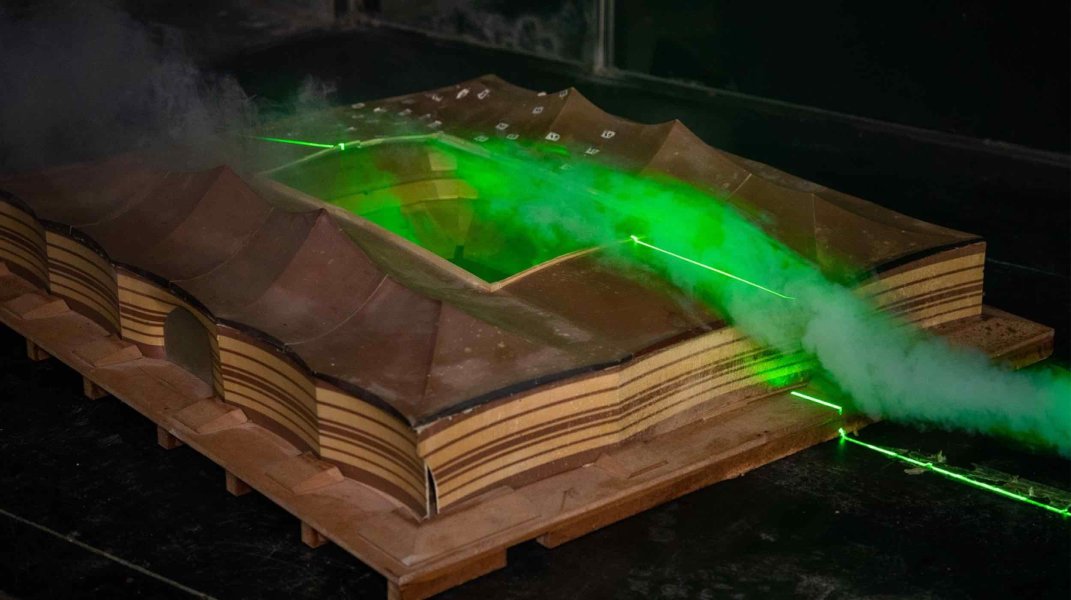
3D printed model of Al Bayt stadium undergoing aerodynamic testing in a wind tunnel.
The measurements were then processed using a Computational Fluid Dynamics (CFD) software to see what the temperature would be at each tier. Variants such as number of spectators and sweat produced were added, and then numerical simulations were done to see their effect on the temperature distribution inside the stadium.
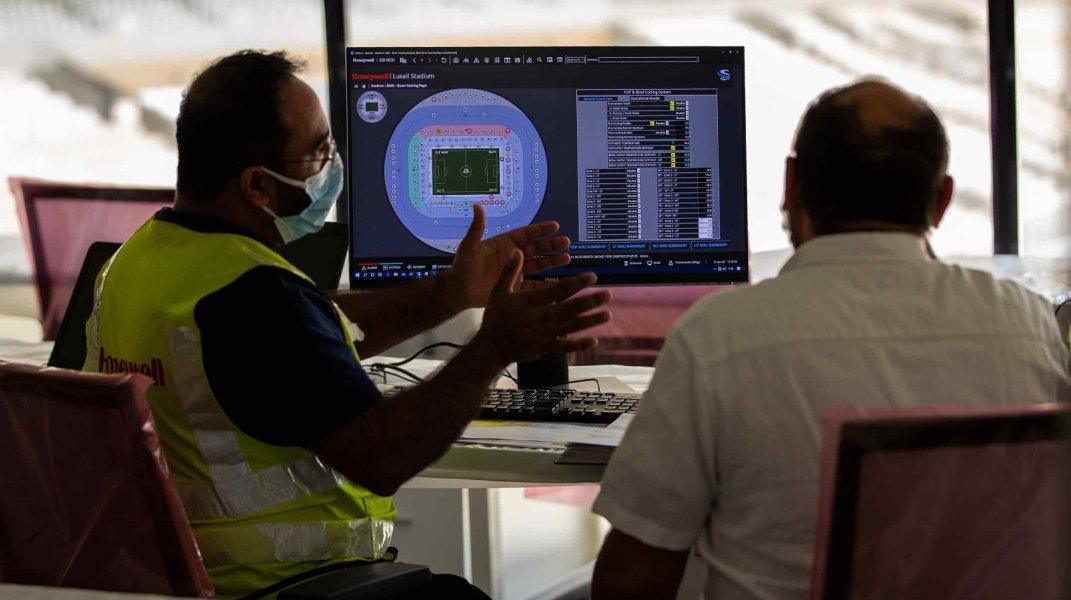
This step was critical in ensuring that the stadiums’ adaptive aerodynamic design would support the cooling process within the stadium rather than work against it. For example, optimization of the size of the oculus – the opening at the top of the stadium – to ensure warm air does not enter the arena was crucial, as well as having a large roof that provided significant shade and reduced the burden on the advanced cooling systems.
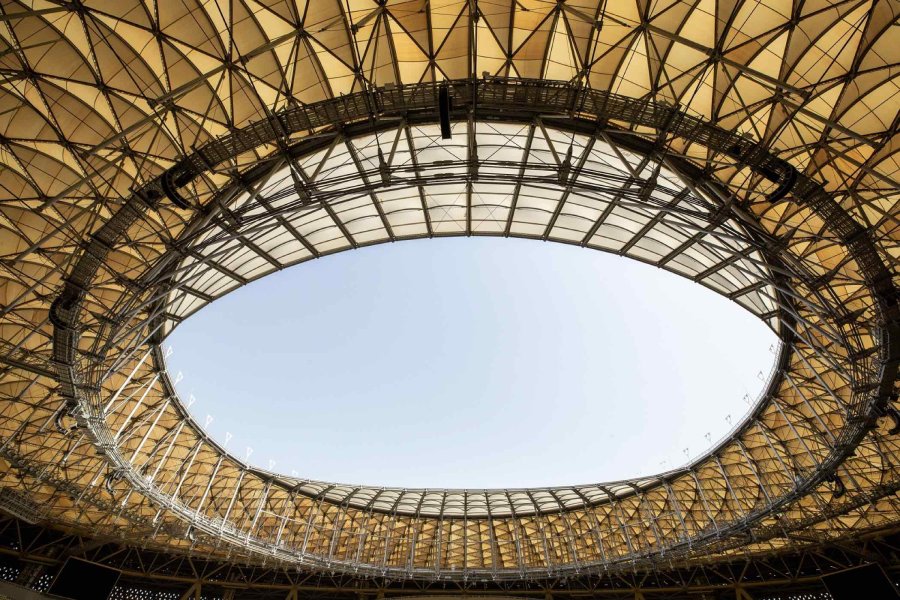
Oculus – the opening at the top of the stadium.
Non-technical aspects were also modified with the help of this step. “In Al Bayt Stadium, the initial design featured a darker colored façade but was later changed to a lighter shade,” said Dr. Ghani. “This simple change passively brought down the inside temperature by 5 degrees Celsius – a quick win.”
Once the designs were optimized, the next step was to start working on the actual cooling system that would create a microclimate inside the stadiums. Dr. Ghani’s ‘eureka’ moment in the project was when he realized that he did not need to cool the entire stadium but only the playing field and the spectators. “We didn’t need to cool the birds. We needed to start from the playing field and go up to a height of two meters above the highest spectator seating level. That’s all the cooling we needed.
“Pumping out huge amounts of cold air to cool the entire open space is inefficient at best. We pump the exact amount of cold air into the exact place, maintain it and contain it—then recycle it all.”
With this realization, he worked on developing a spot cooling system – one which only cooled target areas. After extensive research and testing, the team came up with a state-of-the-art cooling technology that blows cold air on the players via football-sized nozzles alongside the pitch and smaller air diffusers under each spectator’s seat, pushing out cold air at ankle level.
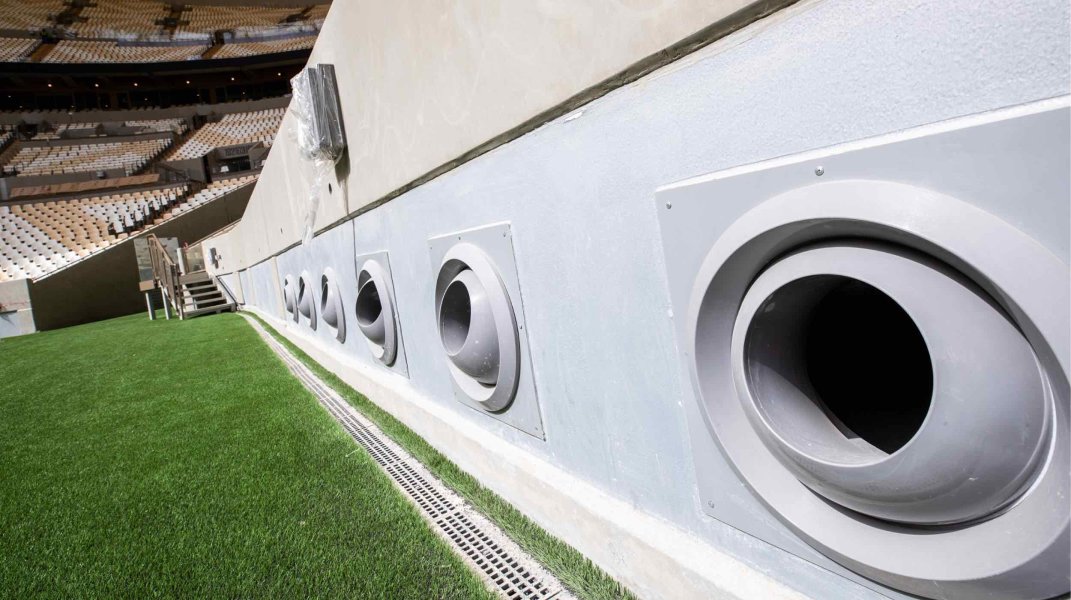
Football-sized nozzles alongside the pitch that blow cold air towards the pitch.
Operating together, the two cold air delivery systems mimic a natural cold airflow. And not only is Dr. Ghani’s approach innovative, it is also sustainable. Using the air circulation technique, the air is then drawn back and re-cooled before being pushed out. This recycling step of re-cooling air from inside the already cooled stadium and not taking in sweltering air from outside is very energy efficient, and, as Dr. Ghani says: “The air is also being purified and filtered every time it is returned, so there are no concerns about the quality of the recirculated air.”
When asked if the intricate design of the air diffusers under the seats is just for aesthetics, Dr. Ghani said: “That is a bonus. The reality is a lot of thought went into the design of these diffusers. We didn’t want to just shoot cold air out of the diffusers, rather we wanted to push it out at an angle, so it’s delivered in a gentle manner.”
Dr. Ghani’s line of under-seat diffusers is also not patented – a choice made to serve the scientific community.
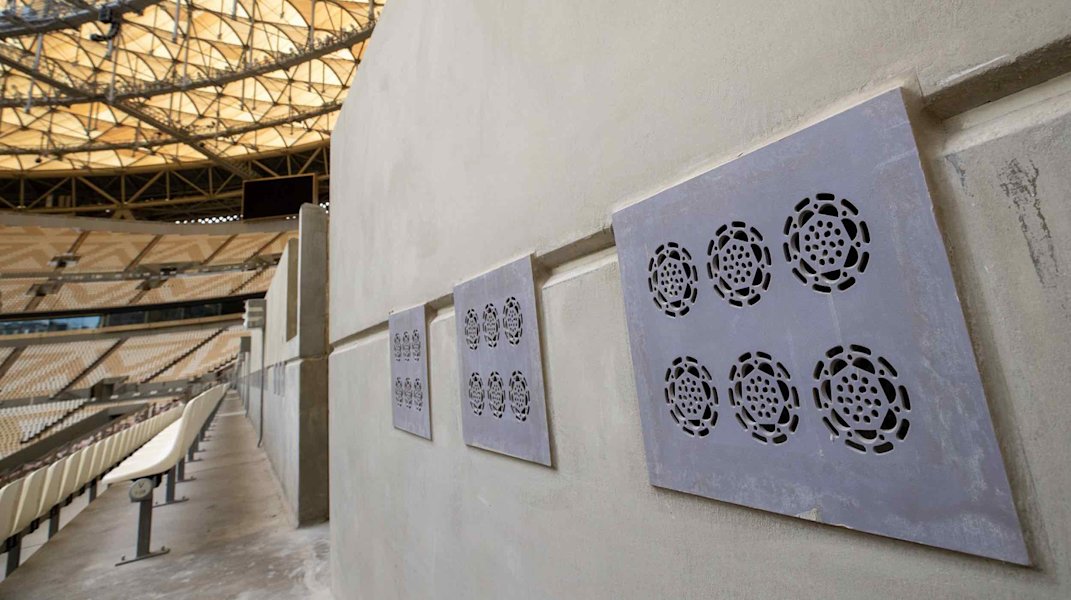
Air diffusers present under each spectator’s seat that push out cold air at ankle level.
When asked was there a need for air conditioning if the tournament will be played in winter, Dr. Ghani said that it was about thinking long-term and having venues that can be used all year round. “Typically, what happens is architects lead the design for any structure and then they ask the mechanical engineering team to find a way to work with it. For the first time, through this project, it was mechanical engineers that led the design process which is precisely why the cooling system was so successful.
“The cooling technology used in the FIFA World Cup Qatar 2022™ stadiums was not delivered through standards and codes, as is normal practice. Instead, it was delivered by science, which was made possible through QNRF.”
The research effort to cool the stadiums served as a springboard for the pioneering cooling technology which has since been deployed in several places across Qatar, including Katara plaza, a commercial greenhouse, and even for cooling local cow barns.
“QNRF, through its funding, planted the seed of knowledge in this previously unexplored area,” says Dr. Ghani. “If it wasn’t for their funding, none of this would have happened – there are no two ways about it. The 3D printer, the wind tunnel, the cooling nozzles: all of this was made possible through their funding.
“Science is about taking risks, and I am grateful that they took a risk with my futuristic proposal back then – and also incredibly proud that it has paid off in more ways than any of us imagined, to the benefit of Qatar’s international standing, and to Qatari society.”
